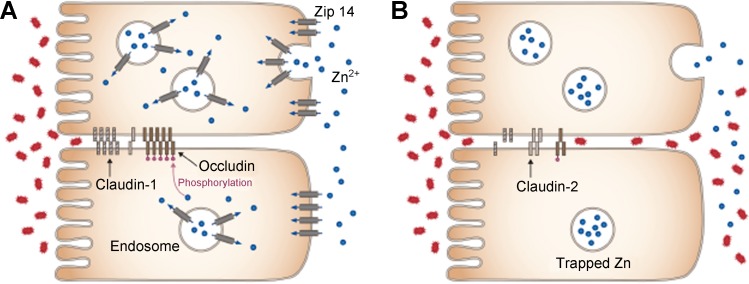Fig. 6.
Proposed model for the ZIP14-mediated influence on TJ function and intestinal permeability. ZIP14 is localized to the basolateral membrane and transports endogenous zinc (blue) into enterocytes. A: in WT mice after endocytosis, ZIP14 functions to release vesicular zinc into the cytoplasm where it acts to maintain OCLN phosphorylation. B: in ZIP14 KO mice, zinc is accumulated in vesicles, and there is loss of a gain in CLDN2 and OCLN phosphorylation at the TJ. Changes in these proteins could contribute to loss of TJ barrier function and lead to increased paracellular movement of enteric endotoxins (red) into systemic circulation. Blue represents Zn2+ and red represents enteric endotoxin.

